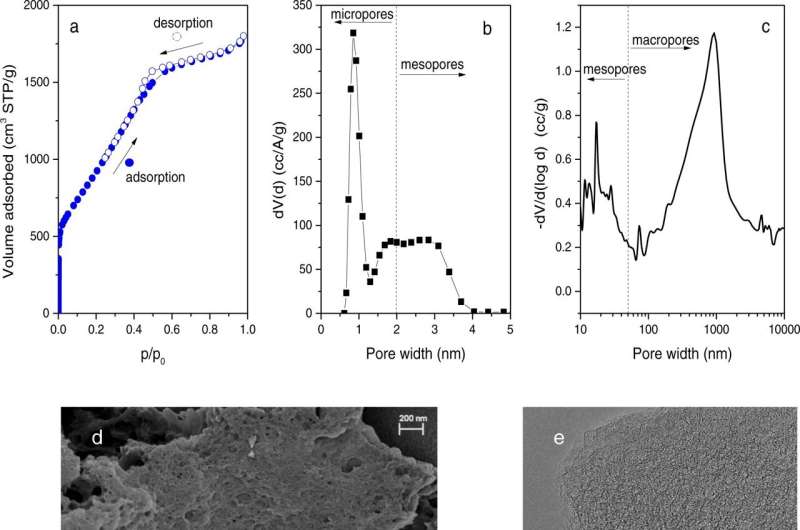
Neutron scattering techniques were used as part of a study of a novel “nanoreactor” material that grows crystalline hydrogen clathrates, or HCs, capable of storing hydrogen. The researchers, from ORNL and the University of Alicante, or UA, were inspired by nature, where methane hydrates grow in the pores and voids within natural sediments.
The nanoreactor material consists of a chemically optimized, porous activated carbon that can confine hydrogen at the nanoscale with excellent thermal stability as high as -27.7 degrees Fahrenheit. Pure liquid water, without additives, is all that is needed to promote HC formation. Nearly 100% of the water is converted into HCs in just minutes—at a 30% lower pressure than required in conventional HC production.
“The ability to store hydrogen at lower pressures and higher temperatures is a step toward potentially using these crystalline hydrates for hydrogen storage in stationary and mobile applications,” said UA’s Joaquin Silvestre-Albero.
The study appears in Nature Communications.
More information:
Judit Farrando-Perez et al, Rapid and efficient hydrogen clathrate hydrate formation in confined nanospace, Nature Communications (2022). DOI: 10.1038/s41467-022-33674-2
Journal information:Nature Communications
Provided by
Oak Ridge National Laboratory

READ MORE
Is there such a thing as negative-calorie food?
Is there such thing as a negative calorie food? Not quite. UpperCut Images/Getty Images Celery [...]
The Enduring Climate Legacy of Mauna Loa
The Mauna Loa observatory. Ted Coran About 60 years ago, David Keeling began to wind [...]
Coral Reefs Face the Dual Threats of Ocean Acidification and Erosion
Three green sea turtles, Chelonia mydas, on a coral reef, Heron Island, Great Barrier Reef, [...]
Get to Know the Scientist Studying Ancient Pathogens at the Smithsonian
Sabrina Sholts is the curator of biological anthropology at the Smithsonian’s National Museum of Natural [...]
How to Check Brake Fluid
iStockphoto/ThinkstockNever fill the reservoir above the “full” mark as this could cause damage to your [...]
Four Types of Stars That Will Not Exist for Billions or Even Trillions of Years
Astronomers believe that in the distant future, trillions of years from now, new and exotic [...]
Researchers construct nanochannels from graphene oxide nanosheets to harvest ocean osmotic energy
Graphical abstract. Credit: Journal of the American Chemical Society (2022). DOI: 10.1021/jacs.2c04663 When thinking of [...]
Columns designed from nanographenes
Two nanographenes (blue) with bulky substituents (gray) have each attached a PAH (red) to give [...]